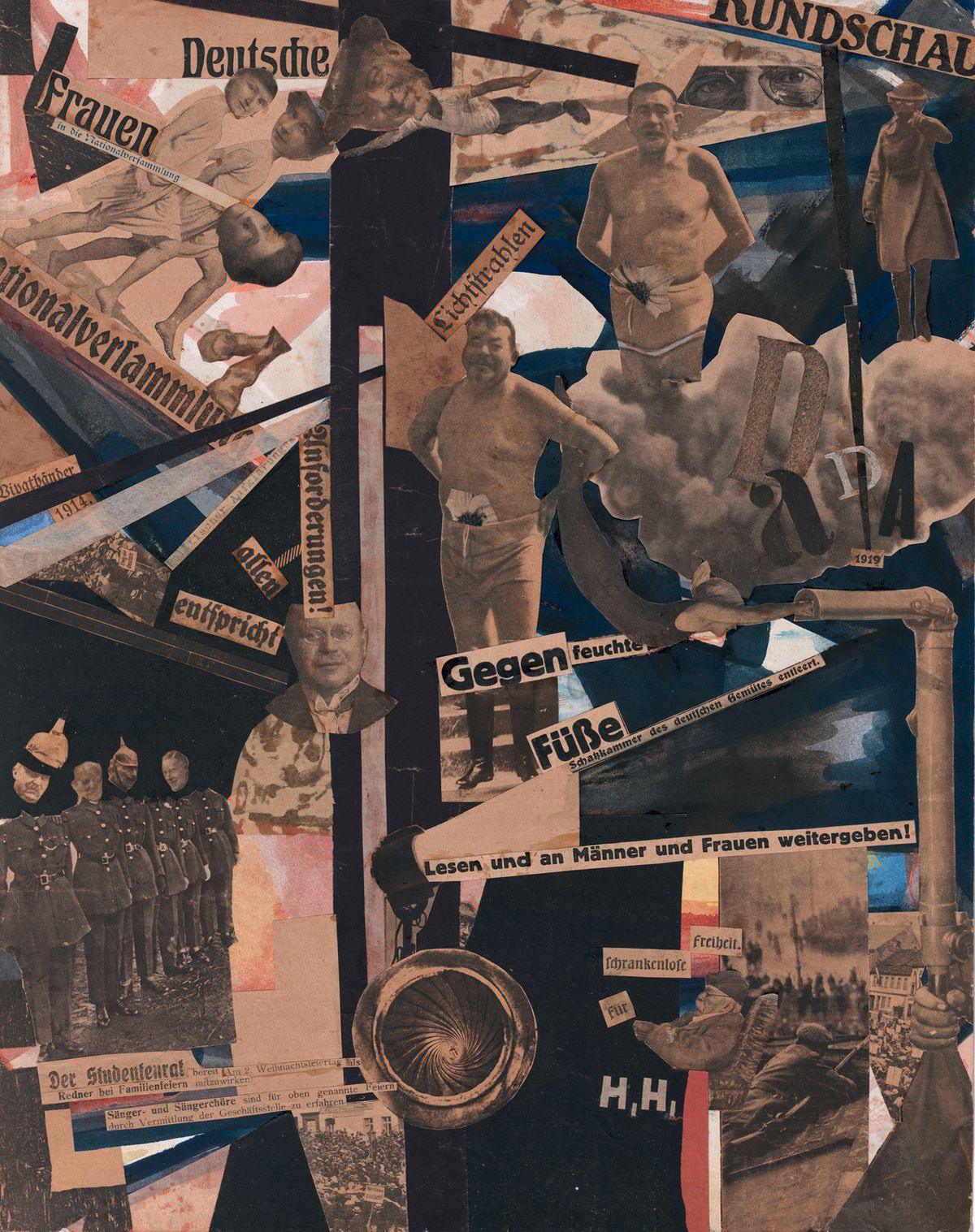Tate Britain’s Aftermath: Art in the Wake of World War One (until 23 September), which opened this week, looks at how European artists responded in the aftermath of the First World War, marking 100 years since its end in 1918. The exhibition includes 150 works made between 1916 and 1932, among them George Grosz’s painting Grey Day (1921), Otto Dix’s Prostitute and Disabled War Veteran (1923), William Orpen’s A Grave in a Trench (1917) and Hannah Höch’s Dada Rundschau (1919). The exhibition also looks at the development of Dada and, later, Surrealism as artists turned to more absurd ways to deal with the traumatic experiences many had lived through.
There are only a couple of weeks left before The Art of Diplomacy: Brazilian Modernism Painted for War (until 22 June) comes to a close. The exhibition at the Sala Brasil, near Trafalgar Square, partially recreates a near forgotten exhibition that took place at the Royal Academy of Arts during the Second World War in 1944. A group of 70 Brazilian artists offered to help with the war effort by shipping their works across the Atlantic, for shows at the Royal Academy and the Whitechapel Gallery in London, before touring the UK, with profits made from the sales going to the RAF Benelovent Fund. Now, 24 works that were dispersed and held in public collections around the UK have been reunited for the first time since they were exhibited more than a half a century ago, among them are pieces by some of Brazil’s best known Modernists.
James Cook: the Voyages (until 28 August), which opens today at the British Library, marks 250 years since the captain set sail from Plymouth to Australia and New Zealand in command of the ship Endeavour. The exhibition also explores two further voyages, undertaken by the Resolution and Discovery, and is centred around the Library’s extensive collection of maps and journals written aboard the ships. The show includes other objects from the first voyage, such as the mouth parts of a squid; the first European illustrations of Hawaii, of the Antarctic and of kangaroos; and south Pacific jewellery and instruments, stretching from Tahiti to Tierra del Fuego. Among the highlights are illustrations by Tupaia, a Tahitian navigator who joined the voyage to New Zealand and recorded a meeting between the naturalist John Banks and a Maori—who offers the Englishman a lobster in exchange for some cloth.


